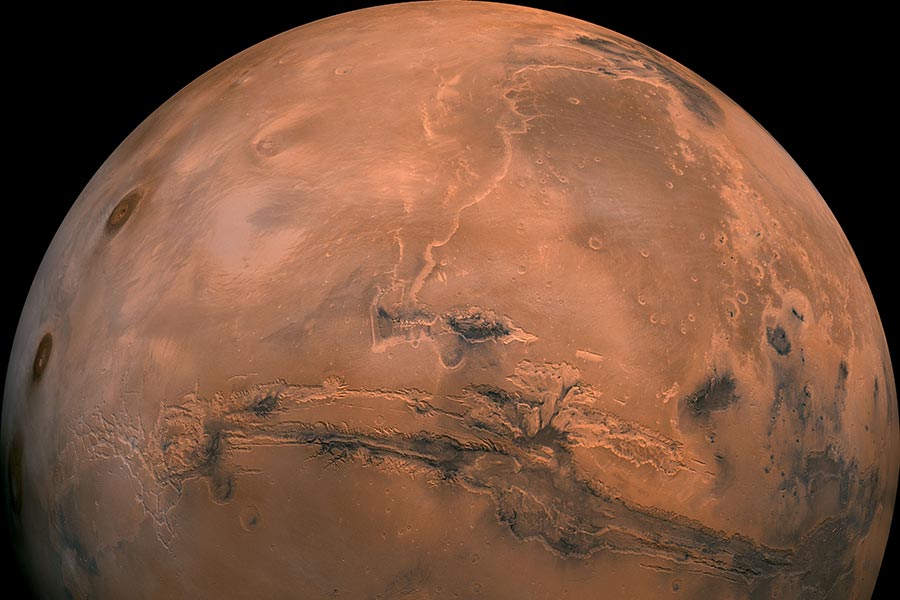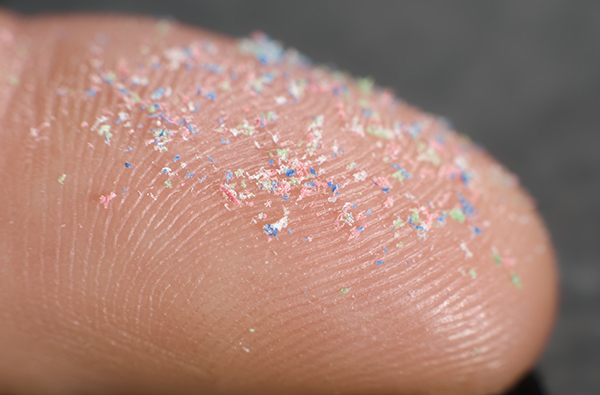 Parler
Parler Gab
Gab
- For twenty years, a scientific debate has persisted regarding the formation of gullies on Martian sand dunes, with a prevailing initial theory pointing to liquid water from a warmer climate.
- Recent observations of bright ice formations within the gullies and new experimental evidence have fundamentally shifted this understanding.
- Researchers have proven that blocks of solid carbon dioxide (CO2) ice, which form seasonally, break off and tumble down dunes.
- A critical process called sublimation, where ice turns directly to gas in Mars's thin atmosphere, causes these blocks to violently displace sand, enabling them to burrow and slide.
- This burrowing action, observed in a simulated Martian environment, carves the distinct, sinuous gullies with high levees and terminal pits seen in satellite imagery.
- This discovery eliminates the need for liquid water to explain these specific features, reshaping the search for past Martian habitability.
A paradigm shift on the red planet
The story begins with a mystery visible from orbit. The frosted sand dunes of Mars, particularly in its mid-latitudes, are etched with intricate networks of gullies—long, often curving channels with raised banks on the sides and deep pits at their ends. For a long time, the most tantalizing explanation was that these were carved by liquid water, a ghostly signature from an era when Mars might have been more Earth-like. This theory fit neatly into the ongoing search for extraterrestrial life, as water is the one ingredient considered non-negotiable for biology as we know it. However, science must follow the evidence, even when it leads away from comfortable conclusions. Researchers like Cynthia Dinwiddie of the Southwest Research Institute and Timothy Titus of the U.S. Geological Survey began meticulously analyzing images from the Mars Reconnaissance Orbiter. They noticed something that didn't fit the water narrative: bright, ice-like patches within these gullies, suggesting current activity linked to the Martian frost, not a long-lost ancient climate. Their work pointed toward blocks of carbon dioxide ice as the active agents of change. The question remained: how could a block of ice carve such elaborate and persistent features?The alien physics of sublimating ice
The answer lies in a process that is commonplace on Mars but foreign to our terrestrial experience: sublimation. On Earth, we are familiar with ice melting into liquid water before eventually evaporating into a gas. On Mars, with its incredibly thin atmosphere and surface temperatures that can plummet to minus 120 degrees Celsius, the conditions are perfect for a different transformation. Solid CO2 ice, which forms as a seasonal frost on the dunes, can skip the liquid phase entirely, turning directly from a solid block into a vast volume of carbon dioxide gas. This phase change is not a gentle one. As Dr. Lonneke Roelofs, an Earth scientist at Utrecht University who led the groundbreaking experimental work, explains, "a kilo of gas requires far more space than the same weight of ice." When a block of this dry ice breaks off and lands on the warmer dune sand, the bottom surface immediately sublimates. The explosive expansion of gas creates a powerful jet, blasting the surrounding sand grains away in all directions. It is this violent, continuous outgassing that provides the mechanism for the ice blocks to sculpt the landscape.Watching the sandworms of Mars
To prove this theory, Dr. Roelofs and her team had to recreate Mars on Earth. They traveled to the Open University in the UK, which houses a specialized "Mars chamber" capable of simulating the Red Planet's low atmospheric pressure. Inside this chamber, they built simulated dune slopes and released blocks of CO2 ice, observing their behavior with a sense of awe. What they witnessed was a phenomenon straight out of science fiction. "It felt like I was watching the sandworms in the film Dune," Roelofs says, describing the surreal motion. The block didn't just slide; it began to actively dig. The explosive sublimation underneath the block would blast out a hollow, causing the block to settle in and become trapped. Yet the process wouldn't stop. "The sublimation process continues, and so the sand keeps on being blasted in all directions," she notes. This relentless excavation allows the block to gradually migrate downslope, carving a deep, narrow gully while piling the ejected sand into the distinct, high levees seen in orbital photos. The block continues its bizarre journey until it reaches the bottom of the dune, where it sublimates away completely, leaving behind only the characteristic pit as its final resting place. This discovery does more than just explain a curious geological feature; it liberates the scientific inquiry into Mars from outdated constraints. It demonstrates that the planet has its own active, unique geology that operates by rules we are only beginning to comprehend. The search for life and water on Mars continues, but it must now be pursued with a clearer understanding of the planet's actual, present-day processes. Sources include: Phys.org OnlineLibrary.wiley.com Enoch, Brighteon.aiLifting weights could transform your gut bacteria in just 8 weeks, new study reveals
By Cassie B. // Share
10 Natural remedies for arthritis management backed by clinical studies
By News Editors // Share
COVID-19 vaccine mandates abandoned after worker uprisings and 27% higher cancer risk findings
By Patrick Lewis // Share
B vitamins: Your natural defense against Alzheimer’s and heart disease
By Evangelyn Rodriguez // Share
Plastic bottles may degrade over time, raising microplastic risks for long‑stored water
By Patrick Lewis // Share
AI “medical board” outperforms human doctors on U.S. Medical Licensing Exams
By Gregory Van Dyke // Share
Regenesis: Revealing the suppressed power of light-based healing over big pharma
By finnheartley // Share
DHS issues stern warning against parties doxxing and threatening ICE agents
By ramontomeydw // Share
10 Natural remedies for arthritis management backed by clinical studies
By newseditors // Share










